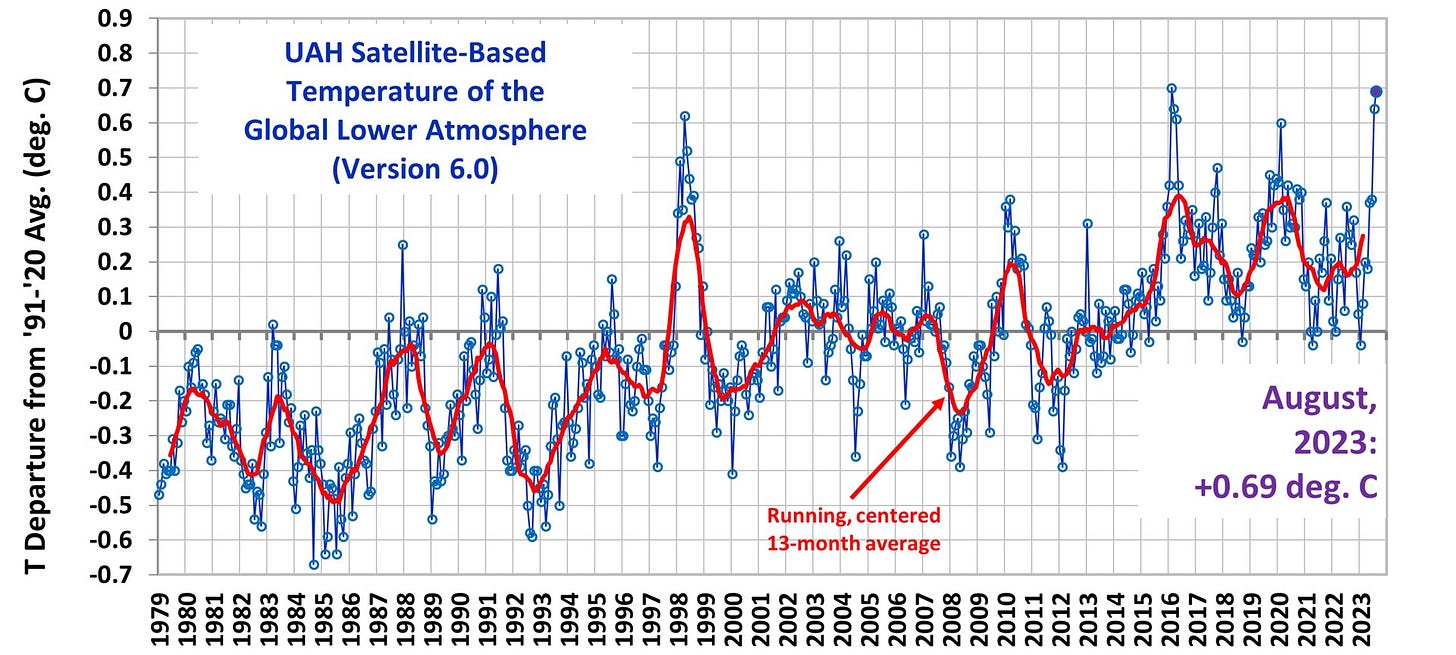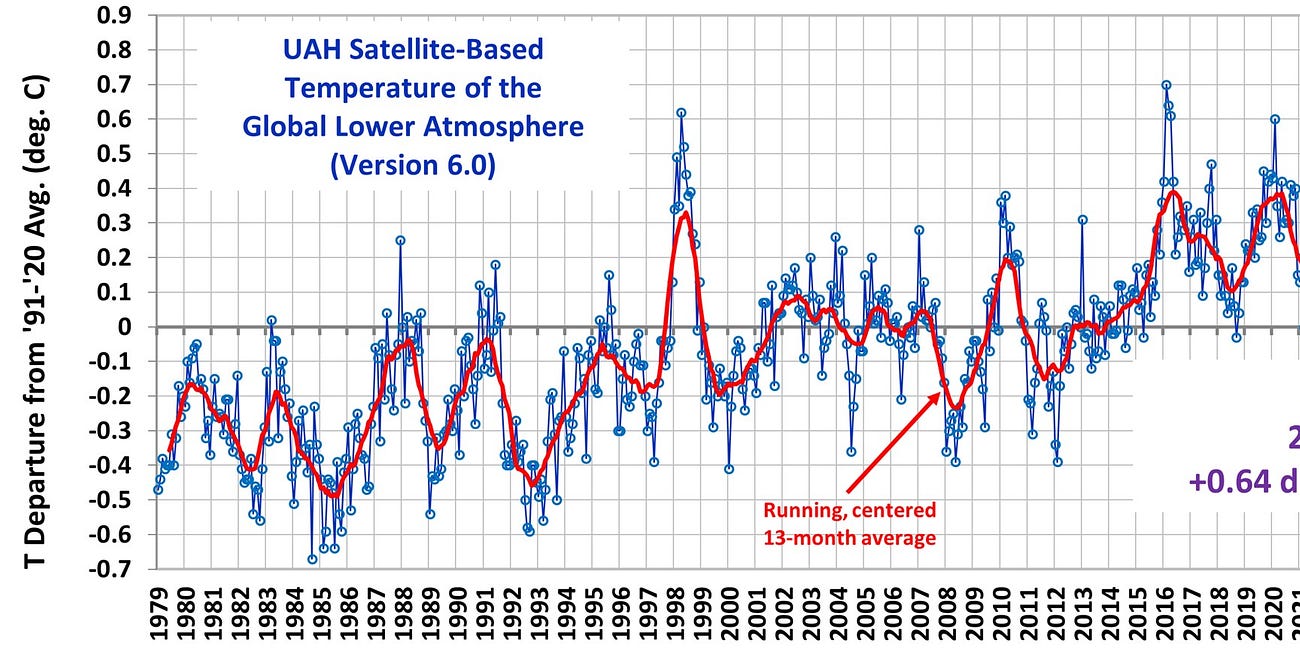Well first the world boiled (in July), and now it’s on a gentle simmer.
There has been a very slight increase in lower tropospheric global mean temperature during August, versus July, when it increased significantly. As you can see from the graph, as things normally go, global temperature spikes briefly (due to El Nino events) and then drops rapidly thereafter. The current El Nino has only just got going and ensemble forecasts predict that it will be a moderate event at best, so it’s not currently El Nino which is keeping global temperatures high and as we note, El Nino causes temperatures to spike, briefly, usually during late winter/spring, soon after mid tropical Pacific ocean temperatures reach their peak around Christmas (hence El Nino = ‘the boy child’).
So will the current ‘global simmering’ continue throughout the year or will temperatures drop sharply in the next few months and then perhaps peak again early next year due to El Nino? Who knows. If global simmering continues though, then something quite extraordinary will be causing it - and that’s not man-made greenhouse gases. The obvious culprit would have to be the Hunga Tonga eruption which caused a huge amount of water vapour (a powerful greenhouse gas) to enter the stratosphere, much of which is presumably still there:
Satellite Data Confirms July 2023 Was An Exceptionally Warm Month - Plus More On Why Tonga May Be The Cause
Dr Roy Spencer has updated the UAH lower tropospheric temperature series. The global temperature anomaly shot up to +0.64C in July: It’s almost as warm as February 2016 and just slightly warmer than April 1998, which marked the global warming peaks associated with two very powerful El Ninos. El Nino has barely got going at the present time so it can’t be…
What is perhaps a little hard to explain is that Hunga Tonga erupted in the southern hemisphere and that’s where most of the water vapour was injected (allowing for world-wide distribution due to global circulation of course), but the northern hemisphere according to Dr Roy Spencer’s latest UAH data is still warming faster than the southern hemisphere and the Arctic temperature anomaly is near a record high, although the Australasia regional anomaly is still very high too. Antarctic sea ice extent is at or near a record low for the observational period (since 1979), but East Antarctica is still very cold, so it’s a complex picture. It will be fascinating to watch what happens as we progress into autumn and winter.







It’s annoying that we get faced with such (usually transient) events from time to time as climate propagandists always misrepresent them. Such rapid global temperature changes cannot possibly be due to man-made CO2.
Clive Best shows a similar trend in his latest global temperature anomaly graph which only goes up to July (so August could well be above 2016). He describes the new El Nino as strong (heat graph). He doesn’t mention Hunga. https://clivebest.com/blog/?p=10595.
Hunga Tonga distibuted water vapor globally from pole to pole.https://substackcdn.com/image/fetch/f_auto,q_auto:good,fl_progressive:steep/https%3A%2F%2Fsubstack-post-media.s3.amazonaws.com%2Fpublic%2Fimages%2F2dfa8c8e-3271-4e65-a0cc-9639ab4049ae_2018x348.png
e 2023 researchers also concluded that Hunga Tonga was one of the most remarkable climate events in modern history, and its effects are expected to last for years:
[D]ue to extreme altitude reach of the eruption, volcanic plume circumnavigated the Earth in only one week and dispersed nearly pole-to-pole in three months. The observations provide evidence for an unprecedented increase in the global stratospheric water mass by 13% as compared to climatological levels. As there are no efficient sinks of water vapour in the stratosphere, this perturbation is expected to persist several years. The eruption has also led to a 5-fold increase in the stratospheric aerosol load, the highest in the last three decades yet factor of 6 smaller than the previous major eruption of Mt Pinatubo in 1991.
The unique nature and magnitude of the global stratospheric perturbation by the Hung eruption ranks it among the most remarkable climatic events in the modern observation era.""